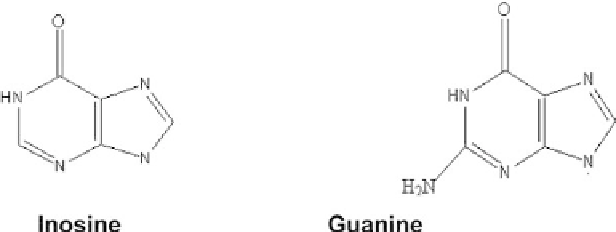Biology Reference
In-Depth Information
acid strands. When mixtures of denaturated DNA from same or
different sources is slowly cooled on same medium, artificial
hybrid DNA molecules to be formed that is called hybridization.
The specificity of such biosensor systems is dependent on probe
selection and hybridization conditions. Such systems are based on
immobilizationoftheprobe(asingle-strandedDNA)torecognizeits
complementary target strand in a mixture by hybridization. Target
strand is the complementary sequence of the probe. The major
aspect is the electrochemical transduction of DNA hybridization
(Grieshaber
et al
., 2008; Sassolas
et al
., 2008; Wang
et al
., 2008)
(Natsume
et al
., 2007). There are several approaches to obtain
transduction. Using redox active molecules having the ability to
bind DNA is the most commonly used approach, often referred as
labeled approach. Binding of redox active molecules might occur
via different ways such as intercalating a planar aromatic ring
betweenbasepairs,bindinginminorgroove,orinteractionwithone
of the bases. Intercalation happens when intercalating molecules
with appropriate size and chemical properties fit in between
base pairs of DNA. These molecules are mostly planar aromatic
structures.Ethidiumbromideanddoxorubicinareexamplesofthese
intercalator molecules. These intercalator molecules do not interact
significantly withsingle-stranded DNA (Sassolas
et al
., 2008).
On the other hand, changes to the electrical properties of an
interface, change in flexibility from ssDNA to the rigid dsDNA, or
theelectrochemicaloxidationofguaninebasesareusedapproaches
for label-free methods for detection of DNA hybridization. There
Figure 16.10.
Comparison of guanine and inosine structures.









